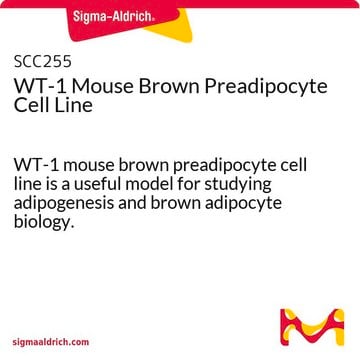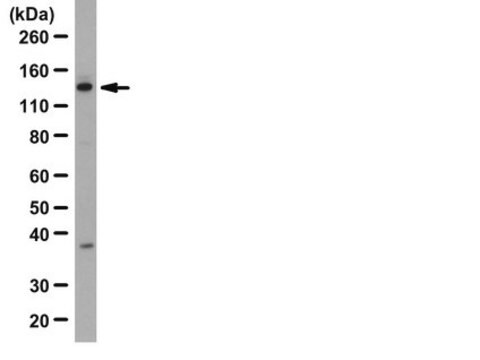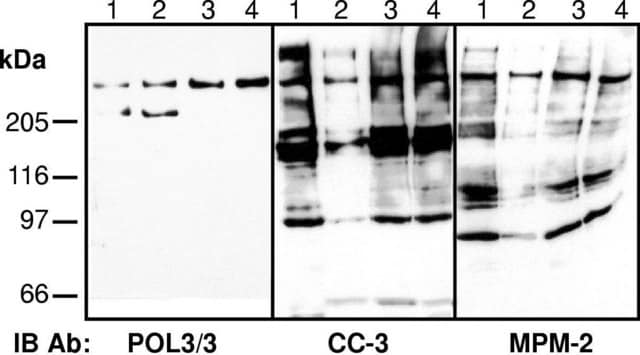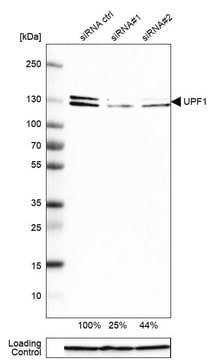07-1016
Anti-phospho-Upf1 (Ser1127) Antibody
from rabbit, purified by affinity chromatography
Sinónimos:
Regulator of nonsense transcripts 1, ATP-dependent helicase RENT1, Nonsense mRNA reducing factor 1, NORF1, Up-frameshift suppressor 1 homolog, hUpf1
About This Item
Productos recomendados
biological source
rabbit
Quality Level
antibody form
affinity isolated antibody
antibody product type
primary antibodies
clone
polyclonal
purified by
affinity chromatography
species reactivity
mouse, human
species reactivity (predicted by homology)
chicken (based on 100% sequence homology), zebrafish (based on 100% sequence homology), yeast (based on 100% sequence homology), bovine (based on 100% sequence homology), rat (based on 100% sequence homology)
technique(s)
immunoprecipitation (IP): suitable
western blot: suitable
NCBI accession no.
UniProt accession no.
shipped in
wet ice
target post-translational modification
phosphorylation (pSer1127)
Gene Information
human ... UPF1(5976)
General description
Specificity
Immunogen
application
Peptide Inhibition Analysis: A 1:1,000 dilution from a representative lot blocked phospho-Upf1 (Ser1127) in NIH3T3 treated with Calyculin A and Okadaic Acid.
Immunoprecipitation Analysis: 5 µg from a representative lot immunoprecipitated phospho-Upf1 (Ser1127) in NIH3T3 treated with Calyculin A and Okadaic Acid.
Quality
Western Blotting Analysis: A 1:1,000 dilution of this antibody detected phospho-Upf1 (Ser1127) in 10 µg lysate from NIH3T3 treated with Calyculin A (50 nM) and Okadaic Acid (500 nM) for 30 minutes.
Target description
Other Notes
Not finding the right product?
Try our Herramienta de selección de productos.
Storage Class
12 - Non Combustible Liquids
wgk_germany
WGK 1
flash_point_f
Not applicable
flash_point_c
Not applicable
Certificados de análisis (COA)
Busque Certificados de análisis (COA) introduciendo el número de lote del producto. Los números de lote se encuentran en la etiqueta del producto después de las palabras «Lot» o «Batch»
¿Ya tiene este producto?
Encuentre la documentación para los productos que ha comprado recientemente en la Biblioteca de documentos.
Nuestro equipo de científicos tiene experiencia en todas las áreas de investigación: Ciencias de la vida, Ciencia de los materiales, Síntesis química, Cromatografía, Analítica y muchas otras.
Póngase en contacto con el Servicio técnico








